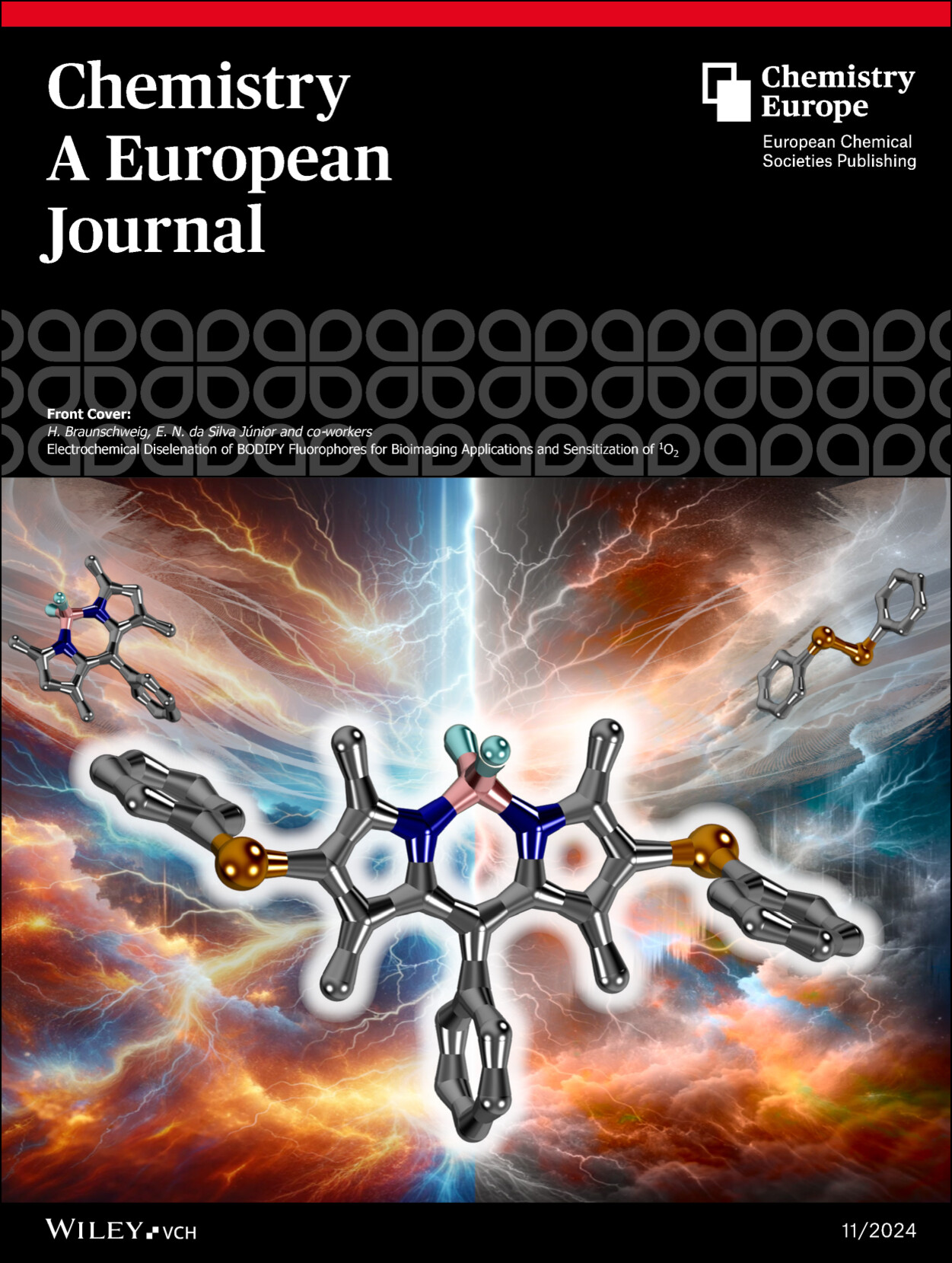
Breakthrough Research in Electrochemical Diselenation of BODIPY Fluorophores Showcases Global Collaboration
In a significant milestone for emerging research talent at the University of Kent, Cauê Souza has co-authored his first publication as a KAIROS member, which is now featured as the front cover of Chemistry – A European Journal. This groundbreaking study, titled Electrochemical Diselenation of BODIPY Fluorophores for Bioimaging Applications and Sensitization of 1O2, highlights a novel approach to bioimaging technology and has been recognised for its innovative research and broad application potential in medical and biological sciences.
The research, led by Prof Eufrânio N. da Silva Júnior and Prof Holger Braunschweig, involves a collaborative effort spanning across the UK, Brazil, and Germany. This large international team, which includes experts such as Dr Felipe Fantuzzi from KAIROS and Cauê’s PhD supervisor, has developed a method for the late-stage electrochemical diselenation of BODIPY fluorophores. This process enhances the photophysical properties of BODIPYs, allowing for red-shifted absorption and color-tunable emission, which are crucial for advanced bioimaging applications.
The study extensively explores the substrate scope, photophysical characterisation, and computational analysis of the selenium-containing BODIPY derivatives. These derivatives demonstrate significant advancements over their precursors, featuring large Stokes shifts, and the ability to sensitize triplet oxygen states due to the heavy selenium atoms. This characteristic makes them exceptionally suitable for visualising lipid droplets, showcasing distinct fluorescence in both green and red channels—a vital attribute for medical diagnostics and research.
The publication of this research on the front cover of such a prestigious journal not only celebrates the innovative chemical synthesis and application demonstrated by the team but also marks Cauê’s impressive debut in high-impact academic publishing at the University of Kent. This feature underscores the potential of new electrochemical methods to create unique emission-tunable fluorophores that could revolutionise fields reliant on detailed and dynamic imaging techniques.